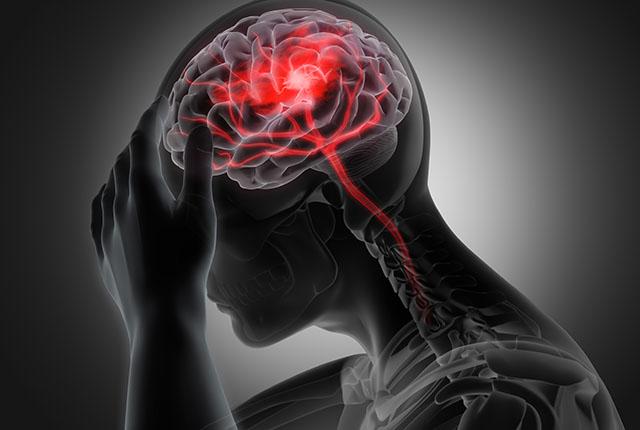
10-paper series explores link between TBI, chronic pain
A UW Medicine psychologist led expansive research of problems faced by people with traumatic brain injury. The results filled a journal's entire issue.Media Contact: Chris Talbott - 206-543-7129, talbottc@uw.edu

UW Medicine’s Dr. Jeanne Hoffman and colleagues from across the nation were poised to celebrate their exceptional achievement: the simultaneous publication of 10 research papers that explore the relationship between chronic pain and traumatic brain injury (TBI).
Then came another, even rarer, reason for jubilation: They learned that their papers would fill the current issue of The Journal of Head Trauma Rehabilitation, cover to cover. It was the scientific equivalent of a baseball triple play, a rare and noteworthy achievement.
“We've all been a little bit bowled over,” said Hoffman, a professor of rehabilitation medicine at the University of Washington School of Medicine. “Typically, topical issues are only part of a larger journal. We definitely managed to fill the whole thing.”
Hoffman co-authored the preface and nine of 10 articles in the series. The 10th, on the use of cannabis and opiates in association with TBI, was co-authored by Amy Starosta, assistant professor of rehabilitation medicine at the UW School of Medicine.
Research has shown a high prevalence of long-term chronic pain among people who had experienced traumatic brain injury. In surveying more than 3,800 people from that population, Hoffman and her colleagues found that about 60% reported current or previous chronic pain.
“What we saw is really high rates of chronic pain across many years post-injury,” Hoffman said. “These are people who even 25 or 30 years out have about the same rates of chronic pain. Around 46% of our group are reporting experiencing current chronic pain, which tells us that they're probably not getting the right kind of treatment.”
Another complication for doctors: The sources of pain associated with TBI vary. Pain can stem from the brain injury itself, or from soft tissue or muscles and bones.. Neuropathic pain and cognitive difficulties are seen as significant barriers to the effective treatment of chronic pain.
Addressing chronic pain more effectively in individuals with TBI has the potential to improve their health and quality of life. People with traumatic brain injuries who also have chronic pain tend to report more disability, worse psychological health and greater difficulty reintegrating into their communities.
Addressing chronic pain in this patient population is especially important, given the heightened focus on opioid addiction globally.
Hoffman and her research colleagues queried patients about the types of pain they were experiencing. Their answers revealed a complex reality.
“People have lots of different kinds of pain,” she said. “Headache is a really prominent problem. Back pain is a big issue. But what we saw is that a lot of people have multiple pain problems. And they've tried a lot of things in treatment.
“What we weren't able to look at, which we need to do next, is to better understand what treatment people are getting and when they're getting it, and are they benefiting from it?”
The authors’ preface introduces the themes of their papers, including:
- An examination of the prevalence of chronic pain after TBI, which remains high post-injury.
- A paper highlighting the increase in psychological health distress (post-traumatic stress, anxiety and depression) and poorer sleep in those with TBI and comorbid chronic pain.]
- Articles that describe risk factors and modifiable factors associated with extreme responses to pain interference on daily life and perceived improvement of pain, as well as the relationship between extreme pain responses and psychosocial outcomes.
- An examination of the predictors for chronic headache after TBI.
- A paper on how opiate misuse and marijuana affect behavioral health after TBI.
- Two articles focusing on access to high-quality chronic pain care for those with TBI: i Pprovider-perceived facilitators and barriers to care and provider perspectives on those barriers and facilitators, as well as a paper exploring stakeholder-recommended strategies to overcome barriers to care.
“The Journal of Head Trauma Rehabilitation is delighted to be able to publish this substantive body of work,” said John Corrigan, the journal’s editor-in-chief and a professor at Ohio State University. “We have known for some time that pain frequently co-occurs with chronic brain injury. Clinically, it can both limit independence and diminish well-being. This series of studies has demonstrated empirically that indeed it is both frequent and disruptive.”
This item includes material written by Melinda Johnston of the UW Medicine Department of Rehabilitation Medicine.
For details about UW Medicine, please visit https://uwmedicine.org/about.